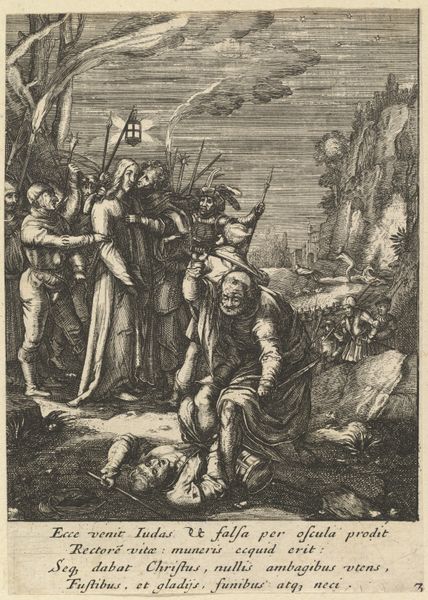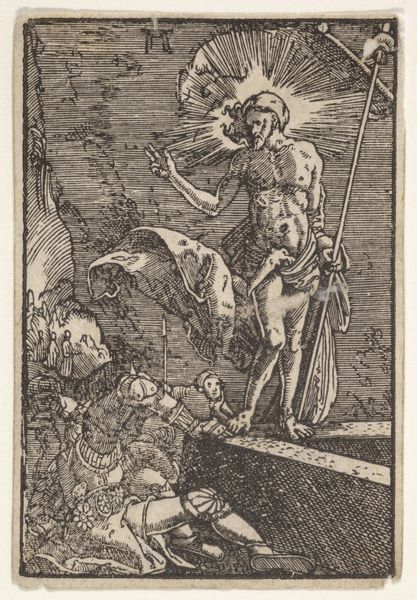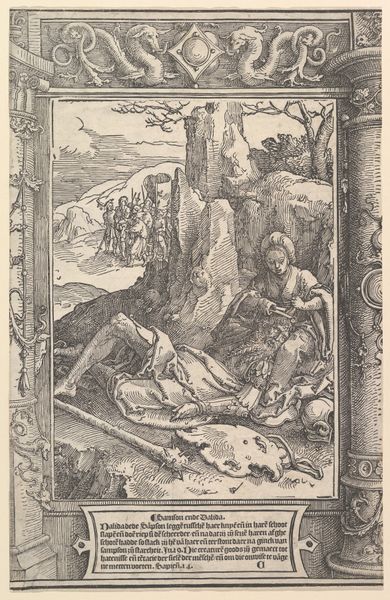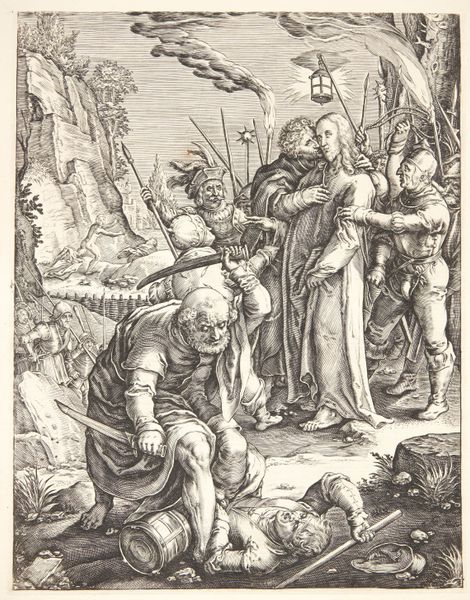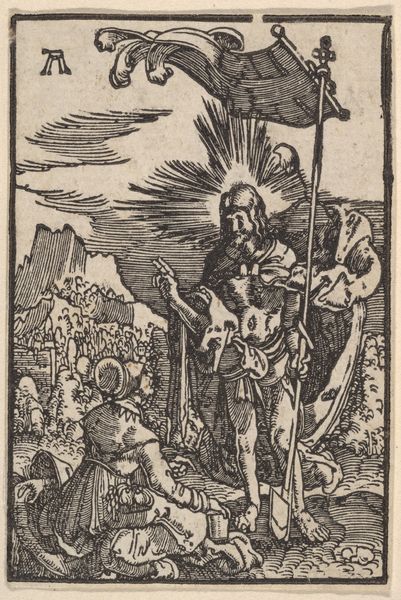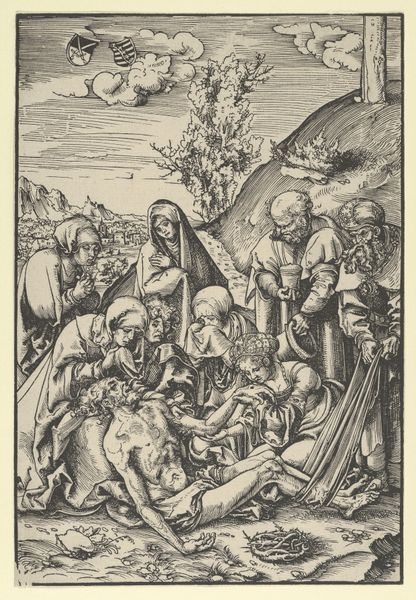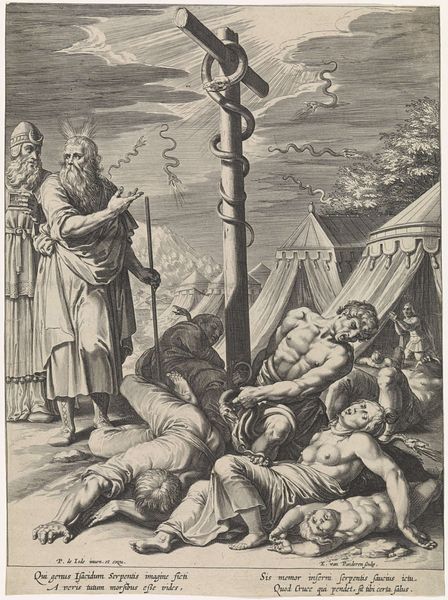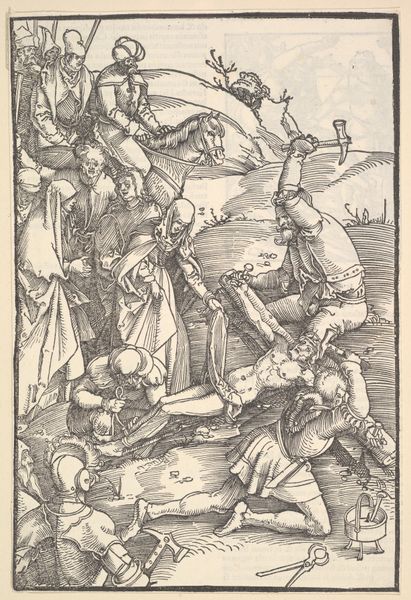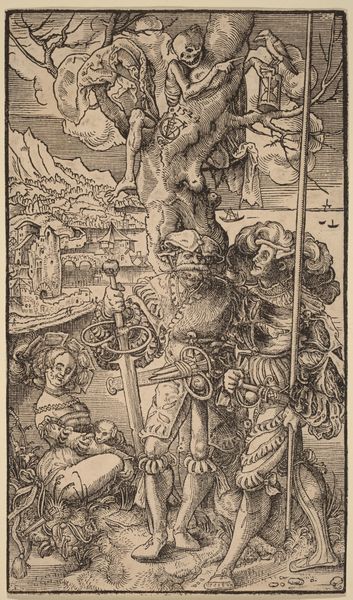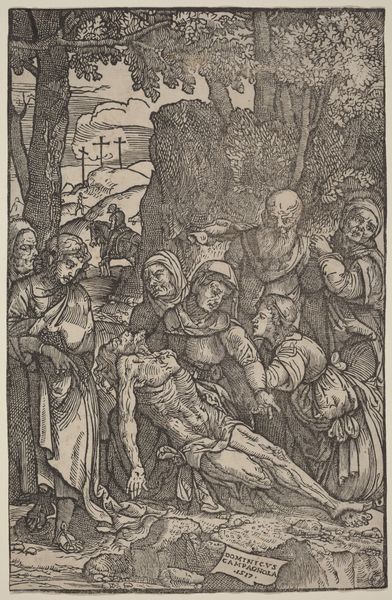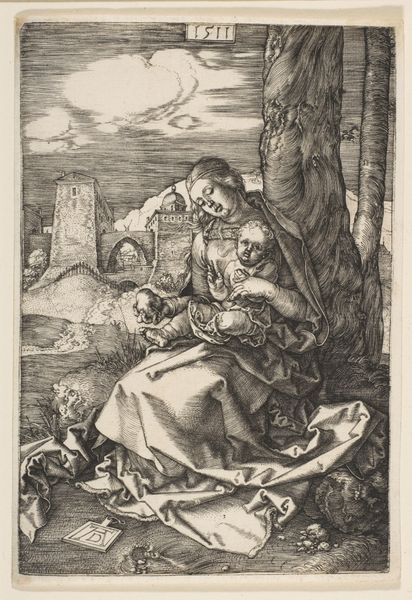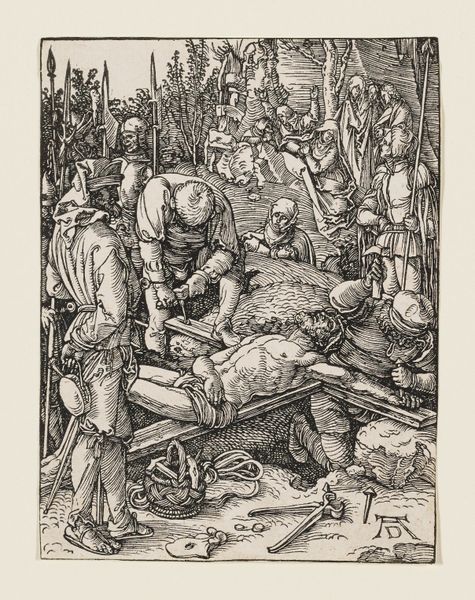
print, engraving
#
narrative-art
#
pen drawing
# print
#
figuration
#
line
#
history-painting
#
northern-renaissance
#
engraving
Dimensions: height 243 mm, width 172 mm
Copyright: Rijks Museum: Open Domain
Lucas van Leyden created this print, Simson en Delila, in the early 16th century using the technique of engraving. This process involves cutting lines directly into a metal plate, which are then filled with ink and transferred to paper. The stark contrast between light and shadow is achieved by varying the density and depth of the engraved lines. Look closely, and you can see how the artist skillfully renders textures, from the smooth skin of Delila to the rough bark of the trees. This printmaking tradition required immense skill and patience. The engraver would have needed to understand metallurgy, toolmaking, and the chemistry of inks. Consider the social context: prints like this made art more accessible, contributing to the rise of a visual culture beyond the elite. The story of Samson and Delilah, depicted here, resonated with viewers in a society grappling with moral and religious issues. Van Leyden’s craft, therefore, wasn't just about technical prowess; it was a means of participating in a broader conversation. By appreciating the labor and materials involved, we can better understand the artwork's significance.
Comments
No comments
Be the first to comment and join the conversation on the ultimate creative platform.
